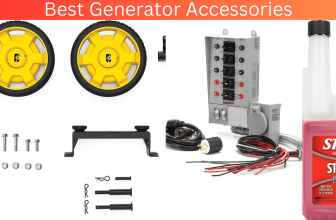Life can be unpredictable, and sometimes you face a power outage that leaves you in the dark. If you rely on electronics to get through your day-to-day activities, then it’s important to have a backup plan.
A generator is an effective way to keep your electronics powered during outages, but there are some steps you need to take if you want them to stay safe. In this article, I’ll show you 6 proven steps that will help safeguard your electronics when using a generator.
From understanding how generators work and taking precautions before powering up to innovative solutions for keeping your devices running safely—I’ve got it covered!
So let’s get started and make sure your electronic devices remain protected during any future power interruptions.
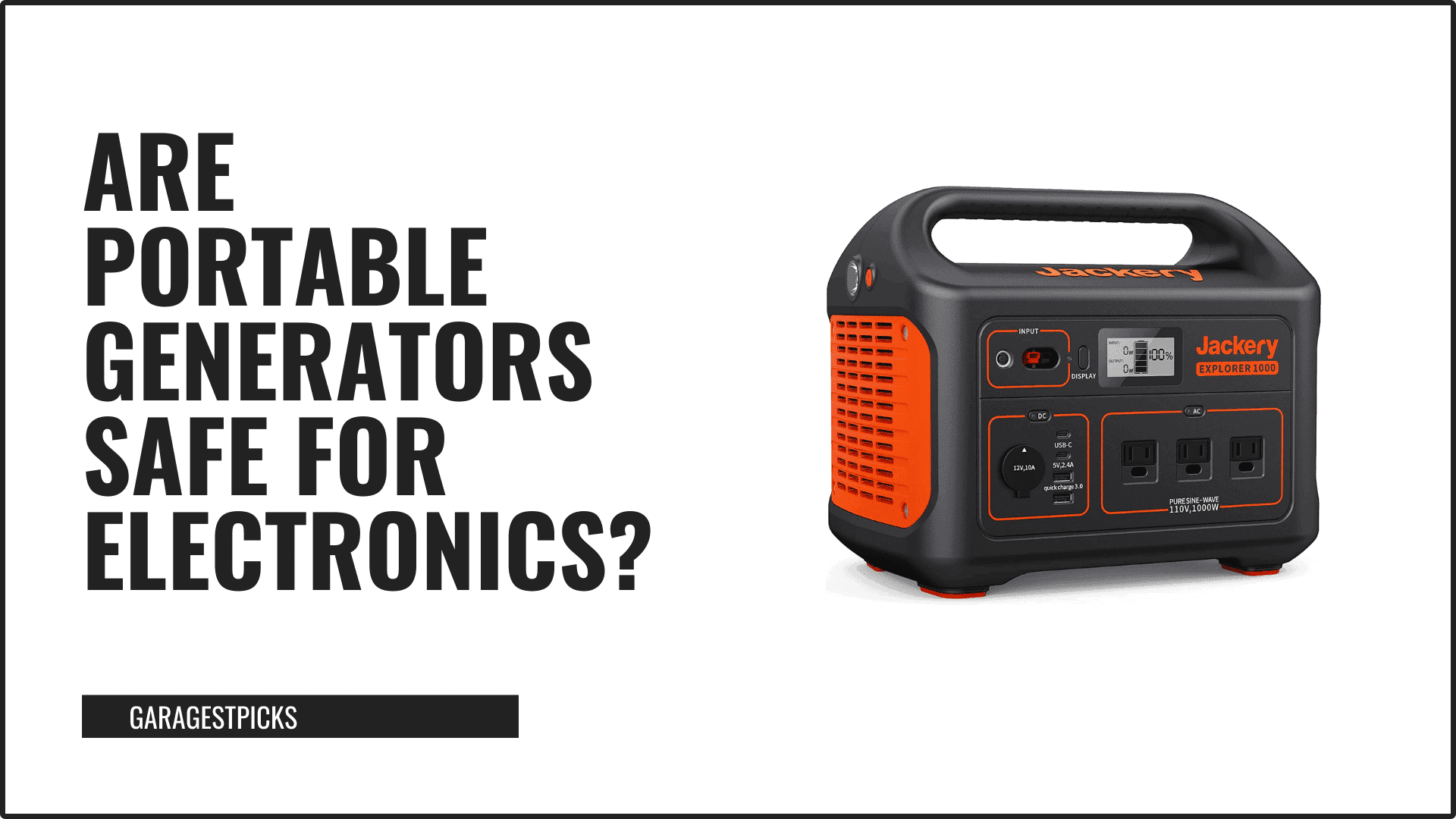
Image Credit: garagestpicks
Introduction
When protecting your beloved electronics, you need to take the right steps – and fast! Generators are an amazing source of backup power for a variety of situations, but they can also put your electronic devices at risk. To safeguard them, you’ll need to deploy several measures in tandem:
- Secure generator installation, surge guard protection, voltage arresters, power conditioners and battery backups.
Generator installation needs to be done properly so there’s no risk of electrocution or other hazards associated with electrical wiring. Moreover, the generator should be placed away from combustible materials, such as gasoline and propane tanks. Additionally, securing the generator is paramount so it doesn’t get stolen or vandalized.
Surge guards protect your electronic devices against sudden surges in voltage. Voltage arresters are designed to prevent overvoltage conditions on the lines connected to the generator, which could cause damage to computers and other sensitive equipment. Power conditioners provide clean electric energy while eliminating line noise and harmonic distortion, which can disrupt the normal operation of appliances like refrigerators or microwaves.
Finally, battery backups are essential in order for an uninterrupted power supply when switching between generator power and utility grid electricity; this ensures that none of your fragile electronics will suffer from a spike in energy levels during these transitions.
It’s critical to understand why safeguarding your electronics with generator matters – not just because it’s an important safety measure but also because it helps keep your favourite gadgets safe from potential harm caused by unexpected power outages!
| Key Takeaways |
|---|
| 1. Understanding the Problem: Generators can produce dirty power, which can damage sensitive electronics. |
| 2. Types of Generators: There are two types of generators – conventional generators and inverter generators. Inverter generators are safer for electronics. |
| 3. Use of Power Conditioners: Power conditioners can be used to clean the power from a generator, making it safe for electronics. |
| 4. Use of UPS Systems: Uninterruptible Power Supply (UPS) systems can also be used to protect electronics from power surges and provide clean power. |
| 5. Use of Surge Protectors: Surge protectors can protect electronics from power surges but do not clean the power. |
| 6. Use of Line Interactive UPS: Line Interactive UPS systems can both clean the power and protect against power surges. |
| 7. Use of Automatic Voltage Regulation (AVR): AVR can adjust the voltage to a safe level for electronics. |
| 8. Use of Sine Wave UPS: Sine Wave UPS systems can provide clean power that is safe for all electronics. |
| 9. Understanding the Limitations: Not all solutions are perfect, and each has its limitations. It’s important to understand these limitations when choosing a solution. |
| 10. Choosing the Right Solution: The right solution depends on the type of electronics, the type of generator, and the specific needs of the user. |
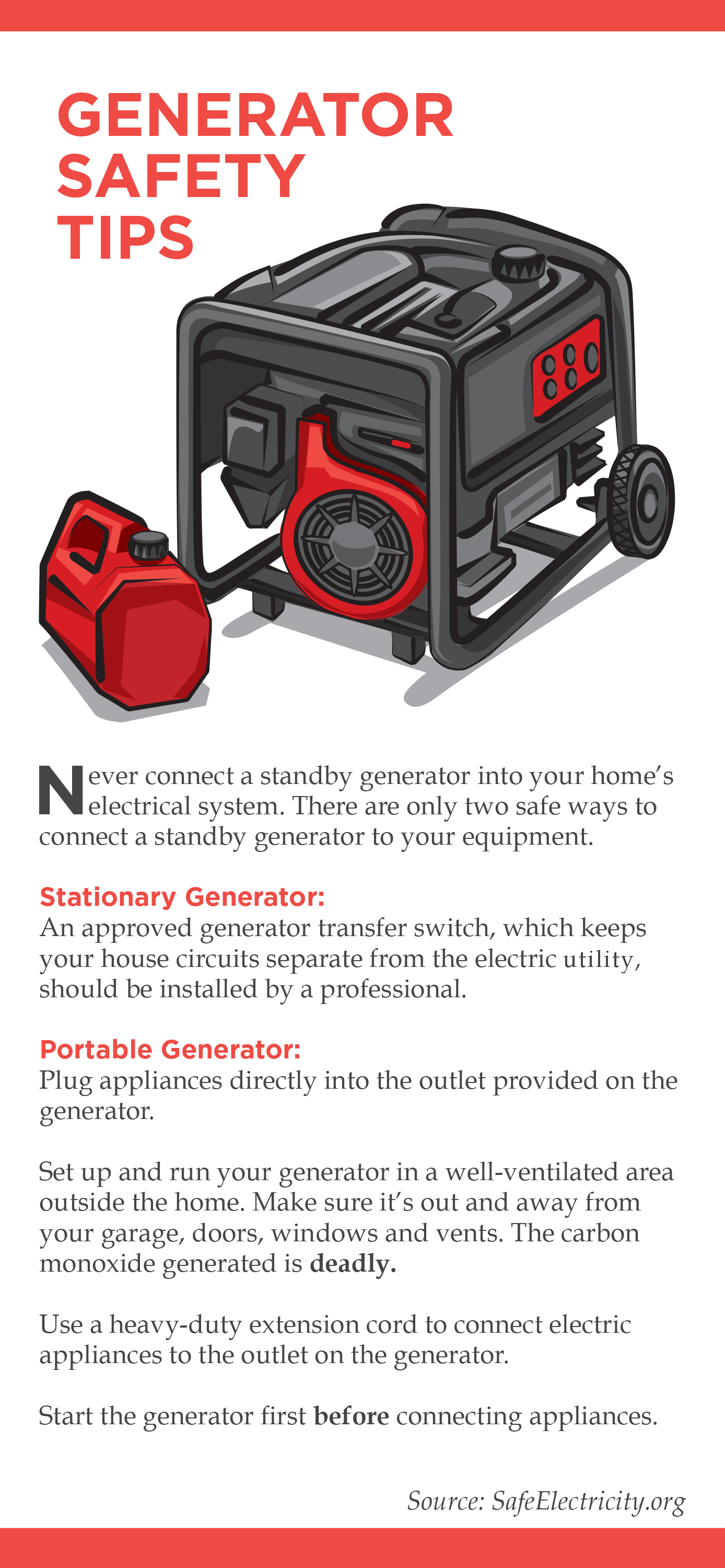
Image Credit: SafeElectricity.org
Why it Matters
You need to understand why it matters to connect your electronics to a generator properly—neglecting this can cause serious damage.
A safe power source is essential for protecting your hardware from overvoltage and other power surges, which can easily fry delicate circuitry. To ensure your equipment remains safe and functional, you must use the right connection method for your generator. This includes using an energy converter, voltage stabilizer, or power inverter generator when connecting electronic devices directly to a generator.
Not having the proper protection in place could cost you time and money if it results in equipment failure or breakdown. A good surge protector is an affordable way of providing extra security for all your electronic devices connected to the generator. It’ll prevent any sudden spikes in voltage from damaging sensitive internal components, preserving their longevity and performance in the long run.
It’s also important to be aware of any safety regulations surrounding generators before attempting any electrical connections yourself – consulting an experienced electrician is recommended if you’re unsure about anything related to wiring procedures or operational guidelines.
With the right precautions, you can rest assured knowing that your electronics have been safeguarded against potential harm from using a generator as a power source. Transitioning into understanding how a generator works is key to ensuring these safety measures are met effectively.
How a Generator Works
Discovering how a generator works is essential to powering your devices safely and efficiently. Generators are powered by fuel, such as gasoline or diesel, which produces electricity in order to power up any electronic device.
The electricity produced is sent through a lightning arrester, power backup, and voltage controller before it can be used for your home, office or business. This ensures the current is stable and protected from any surges caused by external factors such as lightning strikes. Additionally, a line regulator helps maintain the same output level when using different types of generators.
Generators provide us with an emergency power source during blackouts or other power outages due to weather conditions or other unforeseen events. With advanced technology today, there are now several types of generators available that supply reliable and stable power for our electronic needs.
These range from traditional gas-powered engines to modern solar-powered generators that utilize renewable energy sources like the sun’s rays to generate electricity for you. By utilizing the right type of generator with appropriate safety precautions, such as surge protection and voltage regulation, you can ensure that your electronics remain safe while enjoying consistent, stable power generated from your own ‘power plant’ – no matter what kind it may be!
Transforming these proven steps into reality allows you to protect all your gadgets better while enjoying uninterrupted access to a reliable electrical power supply when needed most.
Precautions
Protect your loved ones and valuables with the right safety measures when using a generator – it’s essential for peace of mind. One of the most important precautions to take is to protect against voltage spikes, electrical surges, and other power instability caused by voltage variations or power distortions.
Installing an Uninterruptible Power Supply (UPS) or surge suppressor can help protect your electronics from potentially dangerous levels of electricity. Additionally, make sure that you only use generators that are rated for the correct wattage output for your particular device. Overloading a generator can cause power fluctuations, damaging your electronics and putting people at risk.
It’s also important to check all cords and outlets before plugging anything in to avoid potential shocks or sparks which could start a fire if left unchecked. When connecting multiple devices, use heavy-duty extension cords designed for outdoor use, as they will provide better insulation than standard cords.
Finally, never operate any electronic device near flammable materials such as gasoline containers or combustible liquids, as this presents an extreme fire hazard. Taking these steps will ensure that you keep yourself and your electronic devices safe while using a generator.

Techniques to Make a Generator Safe for Electronics
I want to talk about some techniques to make a generator safe for electronics. Firstly, I recommend using a surge protector and unplugging electronics when not in use. This can help avoid power spikes from the generator.
Additionally, I suggest using a surge arrester as well as being careful with liquids near the generator. A power inverter, Automatic Voltage Regulators (AVR), and power line conditioner or Uninterruptible Power Supply (UPS) are also important safety measures that should be taken into account.
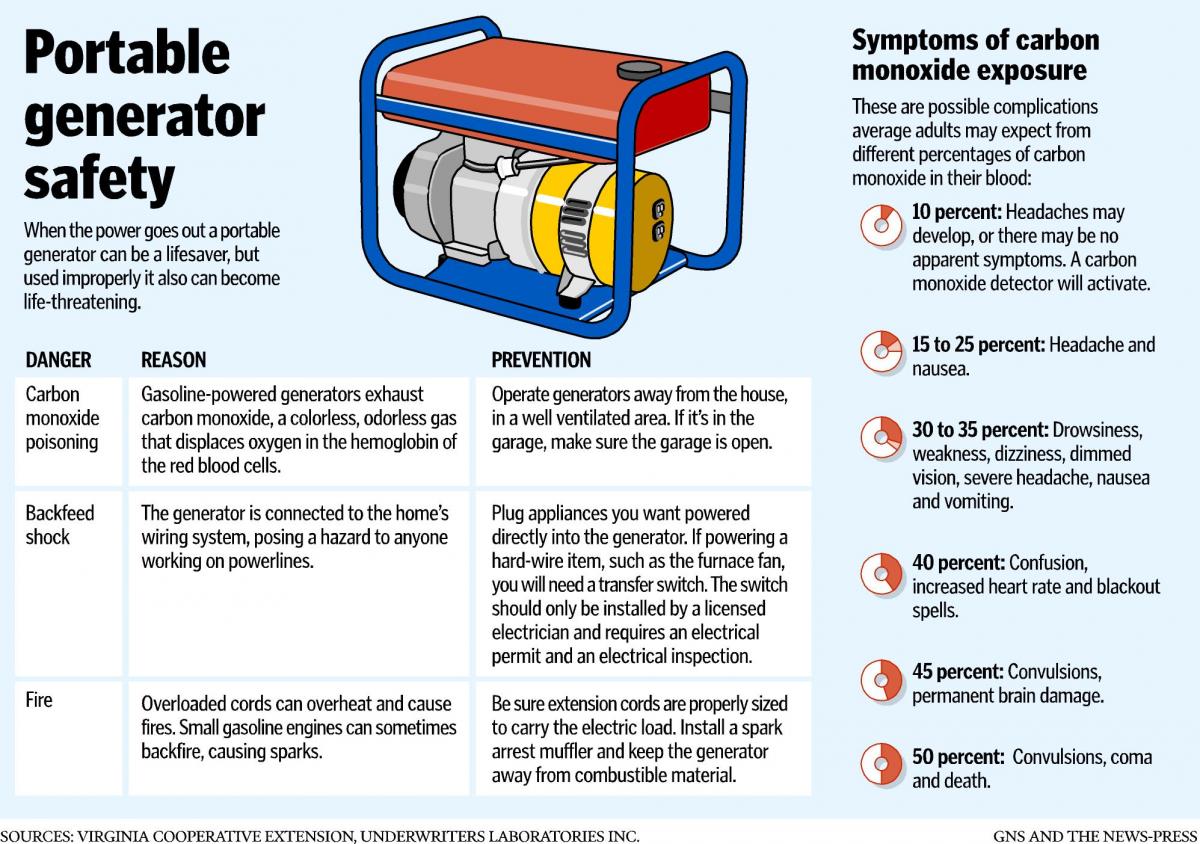
Image Credit: Beaufort
Use of a surge protector
Ensure your electronics are safe from power surges by plugging them into a surge protector! A surge protector can protect delicate devices like computers and fragile electronics from electrical noise generated by AC/DC inverters. It also helps to avoid equipment damage, data loss, or any other kind of interruption in the device’s functioning.
This is an important step in safeguarding your electronics from unexpected power outages or electric storms. Make sure you use a quality surge protector with sufficient voltage protection for all your electrical needs.
A reliable surge protector will help protect your expensive electronic devices and keep them running smoothly for years. Furthermore, it’s recommended that you unplug any electronics when they are not being used to reduce further the risk of power surges damaging them.
Taking these simple steps can save you time and money while protecting valuable investments in technology.
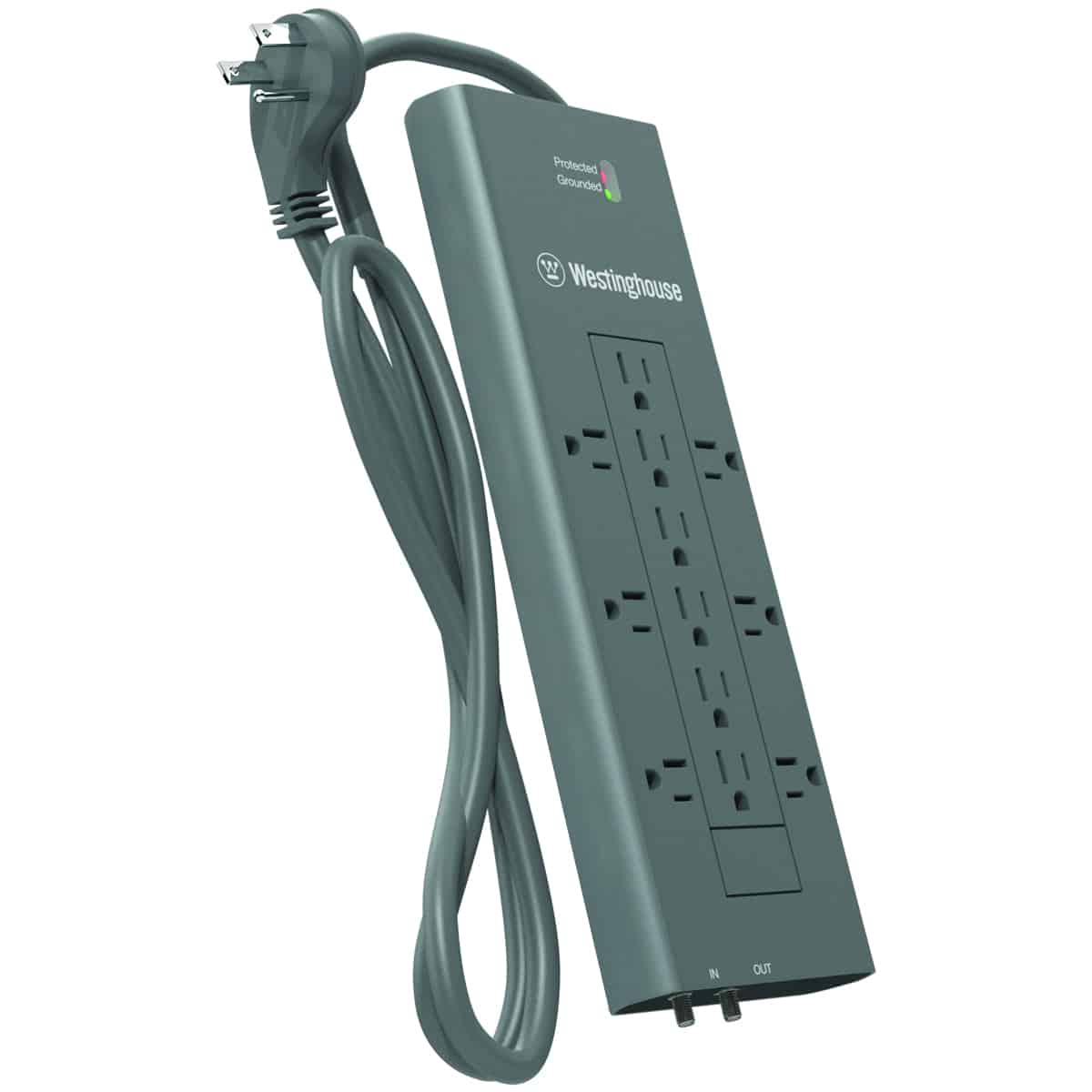
Image Credit: westinghouseacpower
Unplugging electronics when not in use
Unplugging your devices when not in use is an easy way to avoid any damage from unexpected power outages or electric storms. It may seem like a small thing, but unplugging electronic devices can go a long way in preventing potential damage and saving you time and money.
Even if you’re using a surge protector, it’s still important to unplug the device as soon as it’s no longer being used. Doing so will ensure that all the components inside the device are completely disconnected from any electrical current, thus protecting them from possible damage. Taking this extra step can save you significant repair costs down the line.
Moreover, unplugging electronics also prevents them from drawing unnecessary energy, which can add to your monthly electricity bill. This simple task of unplugging electronics when not in use can help you conserve energy while keeping your gadgets safe and secure at the same time – a win-win situation!
To further protect electronic devices against power surges, however, you should consider investing in a surge arrester for added peace of mind.
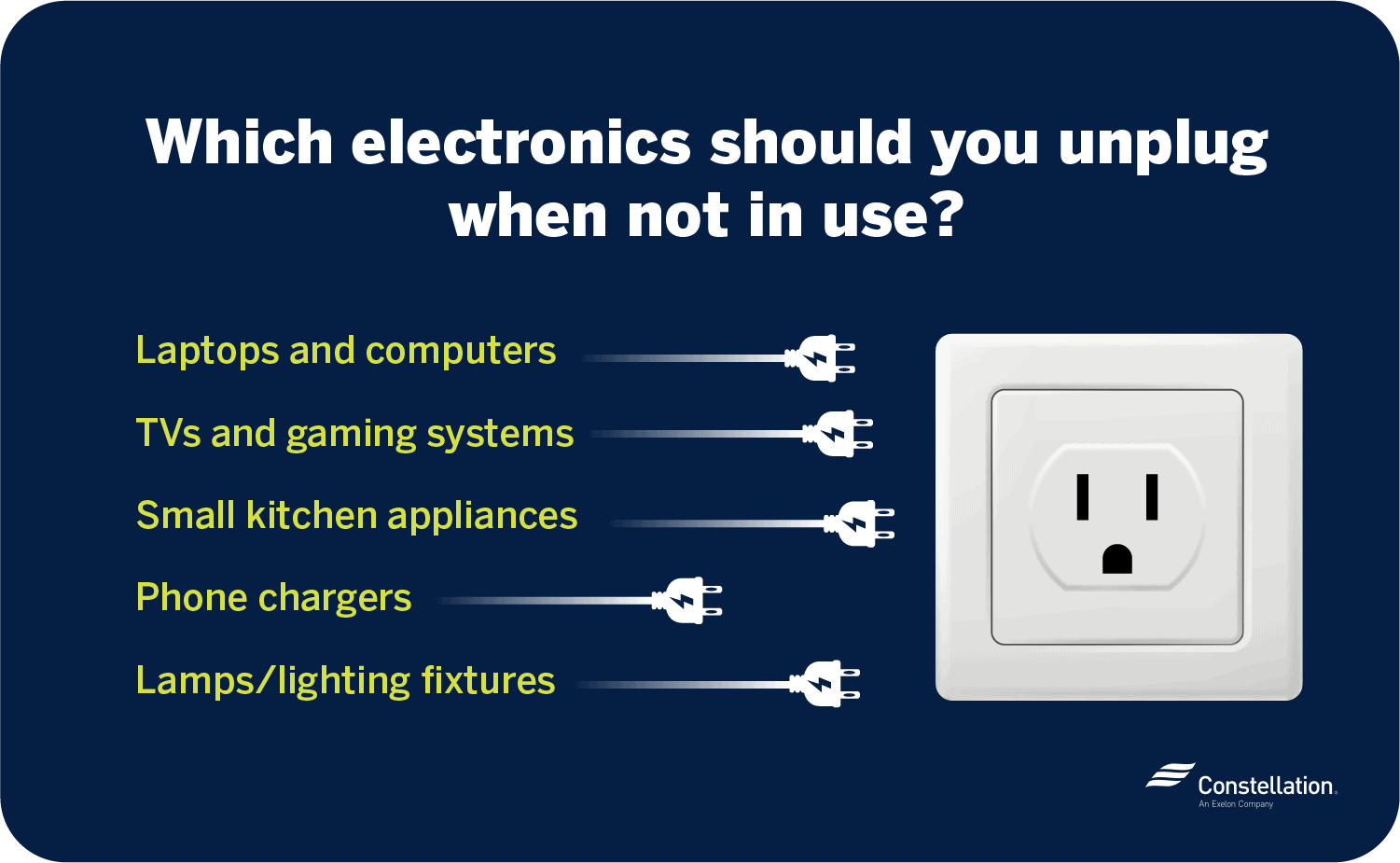
Image Credit: blog
Use of a surge arrester
One way to further safeguard your electronics against surges and power outages is to use a surge arrester. A surge arrester is a device that can be plugged into an outlet or directly wired into your home’s electrical panel, making it an ideal choice for protecting all of the electronic devices in your home.
When there is an unexpected spike in voltage, the arrester absorbs the excess energy and dissipates it safely, preventing any damage to your electronics. This will help protect them from both sudden power outages and ongoing voltage fluctuations.
Using a surge arrester can provide additional peace of mind when protecting your electronics during storms or while you’re away on vacation. While unplugging your devices may seem like enough protection, investing in a surge arrester will give you added assurance that they are safe from harm due to sudden spikes in electricity.
With proper care and maintenance, this device can become a reliable ally in keeping all of your electronic devices secure for years to come. Now that we’ve discussed how using a surge arrester helps protect our electronics, let’s look closer at how best to care for these items when liquids are involved.

Image Credit: Eaton
Care with liquids
Keeping liquids away from your electronics is essential in order to keep them safe and secure. If a liquid were to come into contact with an electronic, it could corrode or short-circuit the device and damage it beyond repair. It’s therefore important to avoid having liquids near your generator, power inverter, or other electronics you’re using alongside the generator for protection.
To do this, make sure all cords are tucked away securely and out of reach of any potential spills. Additionally, if you’re using a portable generator outdoors, consider setting up a tarp or tent over the equipment to protect it from rain or other forms of precipitation. These simple steps will help you ensure that any liquids stay far away from your valuable electronics.
Next on our list of proven steps for safeguarding your electronics with a generator is the use of a power inverter. Power inverters convert direct current (DC) electricity generated by your generator into alternating current (AC) electricity needed by most household appliances and devices.
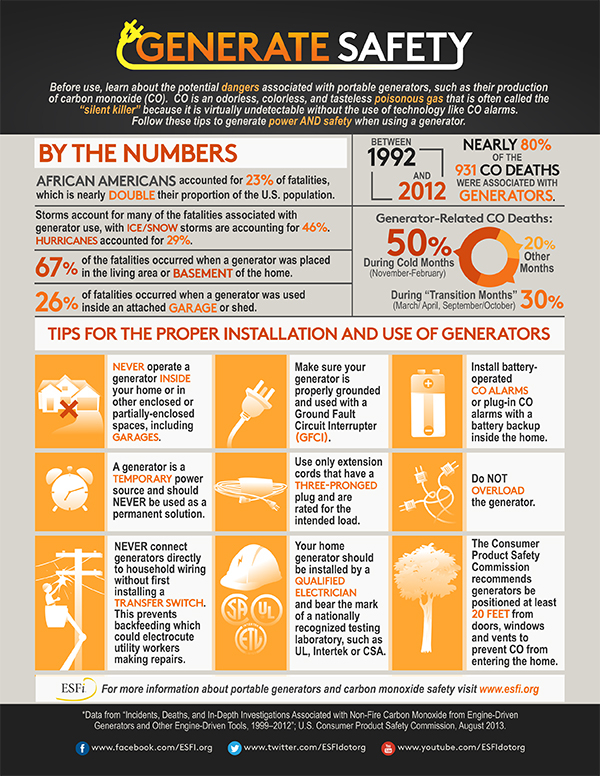
Image Credit: esfi
Use of a power inverter
Now that we’ve discussed the importance of being careful with liquids around generators let’s look at the use of a power inverter as another key step in safeguarding your electronics.
A power inverter is designed to convert a generator’s direct current (DC) output into an alternating current (AC). This is necessary because most electronic devices require AC power and not DC. Using a power inverter allows you to safely run electronics from your generator without risking damage due to incompatible voltage levels. Additionally, it also provides benefits like surge protection and noise reduction for certain types of electronic devices.
When shopping for a power inverter, check the wattage rating on the generator and the device you plan on powering with it. This will ensure that you purchase an appropriate-size inverter for your application.
Once installed properly, your electronics should be protected from any unexpected voltage changes or surges from the generator.
The next step in ensuring the safe operation of electronics with a generator is to use automatic voltage regulators (AVR).
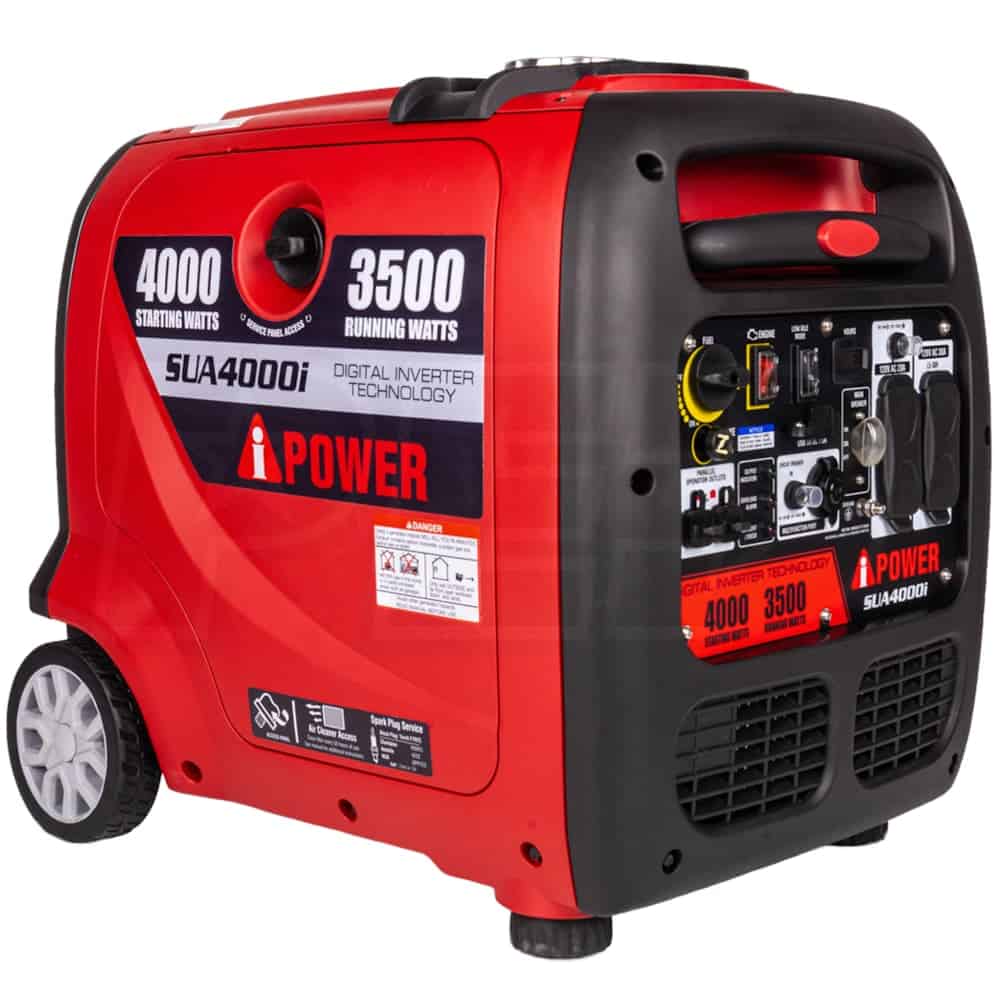
Image Credit: amazon
Use of Automatic Voltage Regulators (AVR)
With an inverter, you can protect your devices from unexpected voltage changes, but using Automatic Voltage Regulators (AVRs) is a must for safe operation. An AVR can detect any sudden voltage spikes or drops and quickly adjust to keep your electronics running safely and efficiently.
An AVR also works to maintain a consistent output frequency—ensuring that motor-driven tools and appliances will not be damaged due to fluctuations in power. With this added layer of protection, you can rest assured that your devices are safeguarded against any potential hazards caused by unreliable grid power.
An AVR provides additional safety measures and increases the lifespan of your generator’s engine as it reduces the load on the motor when demand is low or when no load is present. Plus, an AVR allows you to regulate how much power needs to be delivered so as not to overload circuits in the event of the simultaneous starting of multiple appliances or tools.
So with an AVR helping out, you don’t have to worry about your electronics being harmed by changes in electricity supply—providing peace of mind while ensuring optimal performance. Next up: exploring the use of a power line conditioner!
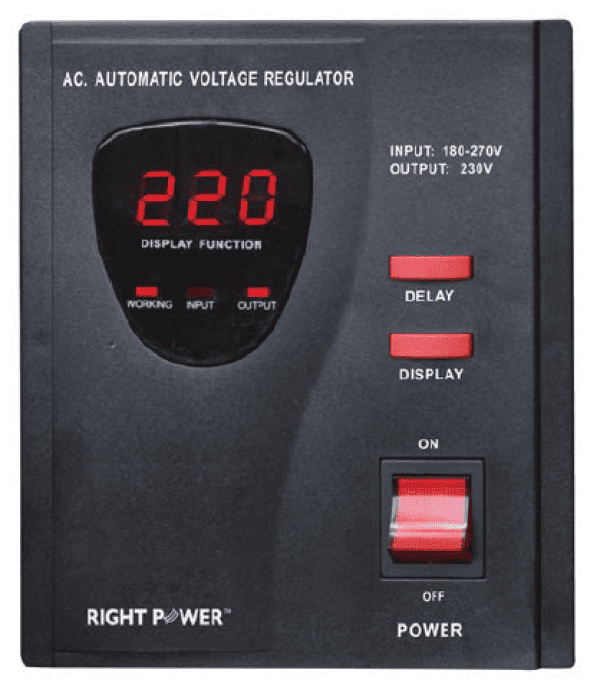
Image Credit: restore
Use of a power line conditioner
A power line conditioner can help ensure your devices are running at peak performance, no matter what the grid throws their way. It works by regulating the voltage levels in your home or business and correcting any irregularities. This includes sags, spikes, and other disturbances that could damage your electronics.
With a power line conditioner installed, you can rest assured that your devices will receive a steady stream of power to run optimally without risking damage to sensitive components. Power line conditioners also provide added protection against surges caused by storms or electrical outages.
They can be used as a supplement with an uninterruptible power supply (UPS), which provides backup battery power when the grid fails, for even greater peace of mind. Together they form an effective safeguard against electrical issues and give you one less thing to worry about when it comes to keeping your electronics running smoothly.

Image Credit: Tripp-Lite
Use of an Uninterruptible Power Supply (UPS)
Protect your devices from power outages and spikes with an Uninterruptible Power Supply (UPS) – it’s the ultimate way to ensure their performance. A UPS is a battery-backed device that provides emergency power when there is a failure in the main electricity supply, ensuring that your electronics remain powered on without interruption.
It also helps protect against voltage surges, lightning strikes, or other unexpected events that can cause damage to sensitive electronic components. Not only does this guard against data loss and downtime, but it also ensures peak performance for all of your connected devices.
With a UPS in place, you can rest easy knowing that your electronics are safe from potential harm. Installing a UPS device is relatively straightforward and requires minimal effort once complete. The cost of purchasing one may be higher than other forms of surge protection. Still, you’ll have peace of mind knowing that your technology investments are safeguarded from unexpected power losses or surges.
Ultimately, investing in a UPS is highly recommended if you want to give yourself the best chance at protecting essential equipment and safeguarding data stored on PCs and servers alike. Now let’s discuss some recommendations for making sure your generator setup is secure…

Image Credit: tech hive
Recommendations
By taking the necessary precautions, you can ensure that your electronics remain safe while using a generator. It’s important to use an uninterruptible power supply (UPS) when connecting electronic devices to the generator. This provides a reliable backup system in case of power failure or surges.
Additionally, it is essential to properly ground all electrical connections and check for frayed wires before plugging anything into the generator. This will help avoid dangerous shorts and fluctuations that could damage your electronics. When selecting a generator, make sure it has enough wattage capacity for whatever device you plan to run on it. Overloading can trip circuit breakers or cause other problems like voltage spikes, which can damage your electronics.
Also, be sure to read and follow all instructions in the manufacturer’s manual carefully before operating the generator so that you understand how it works safely and efficiently.
Finally, never run flammable materials with or near your generator, as this can pose safety and fire hazards. If possible, operate the machine outdoors in an open area where there is plenty of ventilation to reduce carbon monoxide buildup from exhaust fumes. If running indoors is unavoidable due to weather conditions, always use caution and keep windows open for adequate airflow.
By following these recommendations when using a generator with your electronics, you can enjoy peace of mind knowing they’re protected against potential harm caused by improper usage.
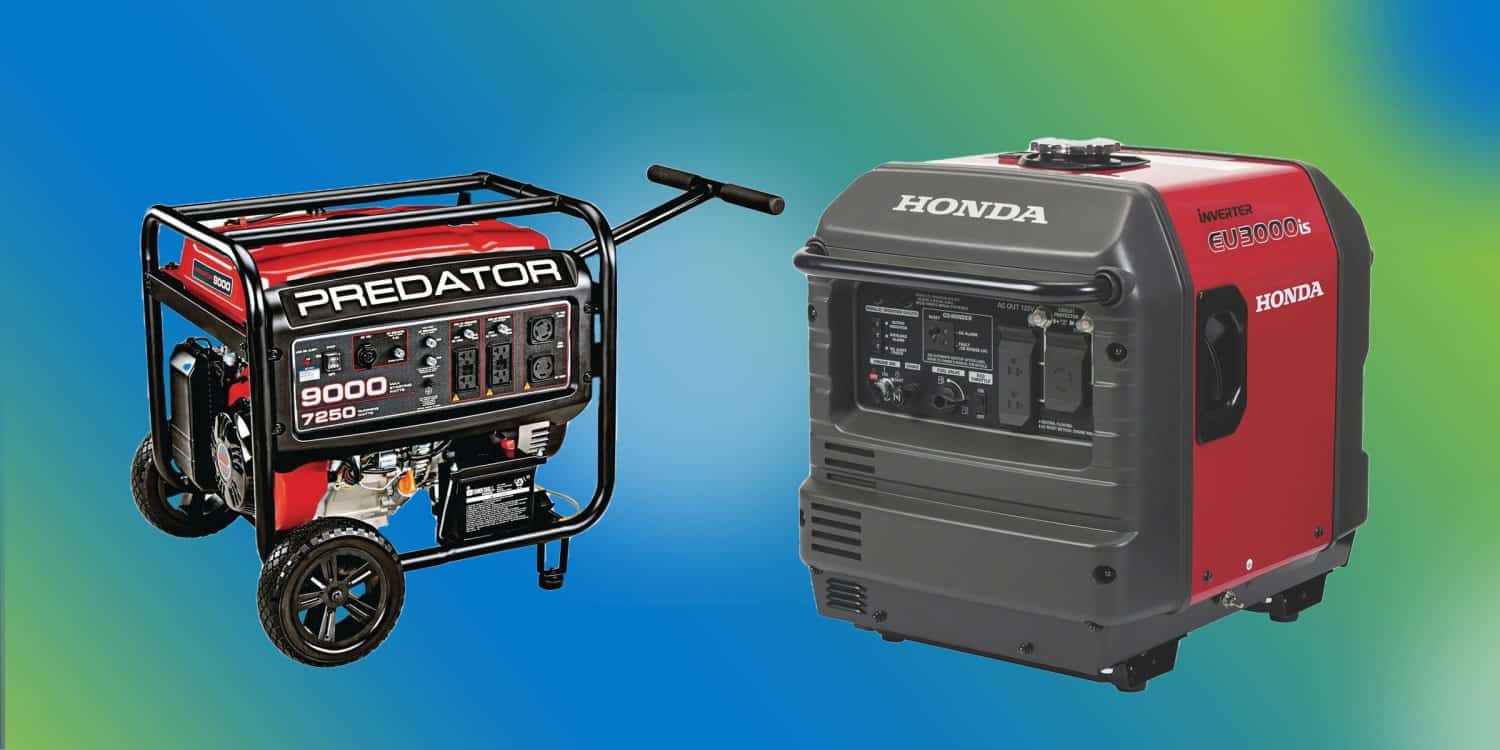
Image Credit: nbcnews
Common Mistakes and How to Avoid Them
Now that you have a better understanding of the recommendations for safeguarding your electronics with a generator, let’s look at some common mistakes to avoid. It’s important to make sure you don’t overlook any safety precautions when using a generator, as it can be hazardous and even deadly if mishandled.
First and foremost, always make sure that your generator is properly grounded. A portable generator should be connected to an approved grounding rod before it’s used. If the ground connection isn’t made correctly, the electricity could easily back-feed into nearby power lines, which could cause injury or death.
Another mistake to avoid is using the wrong type of extension cord or one that isn’t rated for outdoor use. Make sure you read the instructions on your extension cord carefully and choose one that’s designed specifically for outdoor use. This will protect against shocks and electrocution.
Finally, it’s also important to use a surge protector with your portable generator. This will safeguard any electronic devices plugged into it from voltage spikes or surges caused by an overload.
By taking these steps and avoiding these common mistakes, you can ensure that your electronics remain safe while using a generator. With this information in mind, now we’ll explore some innovative solutions for powering up your devices safely with a generator.

Image Credit: ldh
Innovative Solutions
Don’t let power outages put your gadgets and gizmos at risk – explore innovative solutions to power them up with a generator safely. One such solution is using a generator with a power inverter or an AVR. These devices can help produce clean energy, making the generator safe for electronics and protecting your electronics from voltage drops or surges. Additionally, these devices are equipped with features that provide overload protection as well as short circuit protection. This ensures that your electronics are protected against any unexpected issues that could arise during operation.
Another way to safeguard your electronic devices is by using surge protectors and line conditioners when connecting the generator directly to the electricity grid. Surge protectors will absorb sudden spikes in voltage, while line conditioners will filter out any noise interference from other appliances connected to the same grid. Both options can be affordable and easy to install yet offer reliable protection for your electronic equipment.
It’s important to remember that the best way to ensure safety is by taking preventive measures before powering up your electronics with a generator. That’s why it’s essential that you do research on what type of device would be best suited for your needs.
This way, you can make sure you have the right kind of setup for providing clean energy and protecting your devices from potential damage caused by unexpected fluctuations in voltage or current levels. Taking these proactive steps will give you peace of mind knowing that all of your gadgets and gizmos are safe when powered up via a generator!

Image Credit: Beaufort
Recommendations
Make sure to take the necessary precautions when powering up your gadgets and gizmos with a generator. Research the right device for your needs, install surge protectors and line conditioners, and follow manufacturer instructions to ensure safety.
The best way to start is by reading the manufacturer’s manual before use. It’ll provide valuable tips on how to set up your generator correctly and safely. Furthermore, you should consider investing in a surge protector or line conditioner, which can help reduce any potential damage from spikes in voltage due to an unexpected power outage.
It’s also important to check that the extension cord is of adequate size and type for the generator to work optimally. Finally, it’s essential that all generators are adequately grounded according to local laws before use, as this will help prevent electrocution and short circuits if a fault develops during operation.
Taking these steps will go a long way in protecting your electronics and making them last longer while keeping you safe at the same time. Transitioning into proper maintenance procedures is the next step towards ensuring safe operations over long periods of time.
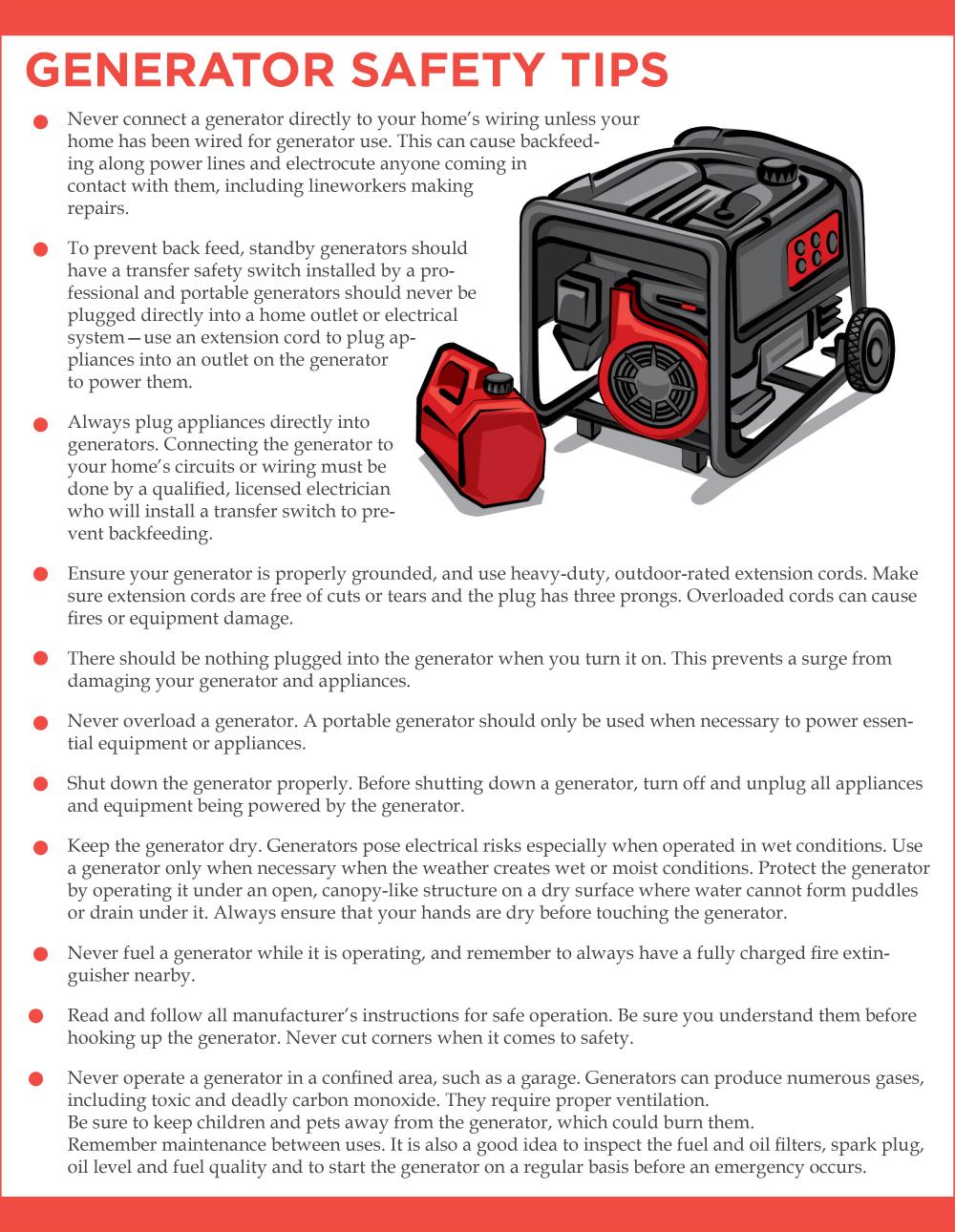
Conclusion
By taking the precautionary measures and following manufacturer instructions outlined in this article, you can ensure your gadgets and gizmos get the protection they need to stand the test of time.
From inspecting wiring and testing power outlets to ensuring proper grounding and ventilation, it’s essential to take all necessary steps for a safe generator setup.
Above all else, be sure to use only EPA-approved fuel types designed specifically for generator use, as they’re formulated with additives that help reduce deposits over time.
In addition, be aware of the wattage loads your generator is capable of supporting. If you exceed this amount, it could cause damage or fire due to an overload on your system.
Finally, if possible, have a qualified electrician inspect your setup before using any electronic devices with the generator just to make sure everything is up to standard.
Regular maintenance checks on both your generator and electronics will help ensure their longevity while providing peace of mind. By adhering to these safety measures, you can protect yourself from harm and extend the life of your electronics so they’re ready when you need them most.
Top 5 Generators Safe For Sensitive Electronics
Honda 664240 EU2200i 2200 Watt Portable Inverter Generator with Co-Minder
This generator is praised for its reliability and quiet operation. It has a 2200-watt output and features an eco-throttle system that adjusts the engine speed to match the power demand, saving fuel and reducing noise. The inverter technology ensures clean, stable power for sensitive electronics.
WEN 56200i 2000-Watt Gas Powered Portable Inverter Generator, CARB Compliant
The WEN 56200i is a 2000-watt generator that is also noted for its quiet operation. It has a clean power output with less than 1.2% total harmonic distortion, making it safe for laptops, cellphones, and other sensitive electronics. It also has an eco-mode that adjusts fuel consumption as items are plugged and unplugged.
The Yamaha EF2000iSv2 is a gas-powered generator with a 2000-watt output. It features a smart throttle that varies engine speed based on load, improving fuel economy and reducing noise. Its inverter system with Pulse Width Modulation (PWM) control produces a pure sine wave to power sensitive electronics.
Westinghouse Outdoor Power Equipment 2200 Peak Watt Super Quiet & Lightweight Portable Inverter Generator, Gas Powered, Parallel Capable, Long Run Time
The Westinghouse iGen2200 is a super quiet portable generator with a 2200-watt output. It has less than 3% total harmonic distortion, making it safe for sensitive electronics. It also features an efficiency mode for maximum fuel efficiency.
The Generac 7117 GP2200i is a 2200-watt portable generator that features True Power Technology for clean, stable power ideal for sensitive electronics. It also has an economy mode for improved fuel efficiency and reduced noise.
Frequently Asked Questions
What type of generator should I buy?
Choosing the right generator for safeguarding your electronics can be a daunting task. After all, you want to make sure that your electronics are safe and secure from any possible power outages or surges.
Here’s what you need to consider when selecting a generator: size, fuel type, noise level, and cost. Consider how much power you’ll need from your generator to meet the needs of your electronics. If you’re looking for an efficient option that won’t break the bank, diesel generators tend to be more affordable than gasoline models.
There are also several quieter models available if noise is a concern in your area. Ultimately, finding the best generator will depend on your specific needs and budget.
Image Credit: bacchusmarshmowers
How much will it cost to use a generator?
Using a generator for protecting your electronics can be an expensive endeavour. Depending on the size, quality, and type of generator you buy, you could end up spending anywhere from hundreds to thousands of dollars. That’s why it’s important to do your research and find one that fits your needs and budget.
Don’t forget to factor in fuel and ongoing maintenance costs too!
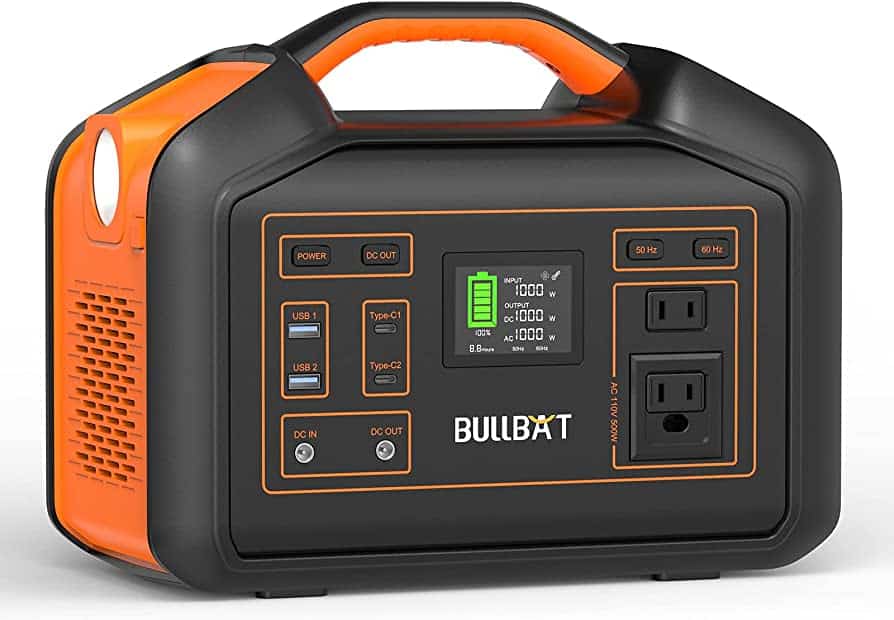
Image Credit: amazon
How often should I maintain my generator?
Maintaining your generator is essential to ensuring it performs when needed. I recommend checking it regularly, such as every month or two. During maintenance, check for any signs of wear and tear. Pay attention to fluid levels, and listen for any strange noises the machine might be making.
Make sure to replace any worn-out parts and keep the area around it clean. Taking proper care of your generator can save you money in the long run. Not only are you preventing potential breakdowns, but also extending its life expectancy!

Image Credit: spruce generator
Are there any additional safety measures I should take when using a generator?
I’m using a generator for my electronics and want to ensure I follow all the necessary safety measures. In addition to ensuring it’s regularly maintained, I can take some other steps.
It’s important to store fuel safely away from my generator and make sure my hands and clothes are clean before handling it. I should also ensure that all cords and plugs connected to the generator are in good condition, tightly secured, and not overloaded with too many devices.
Finally, having an emergency shut-off switch is a great way to quickly turn off the generator if needed.
Is it possible to power larger electronics with a generator?
Yes, it’s possible to power larger electronics with a generator. However, it’s important to be mindful of your generator size and wattage output when powering larger items.
Make sure the wattage on your generator is higher than the total wattage for all of your appliances combined.
You should also consider investing in an inverter generator to help protect electronics from potential power surges or drops when using a conventional generator.
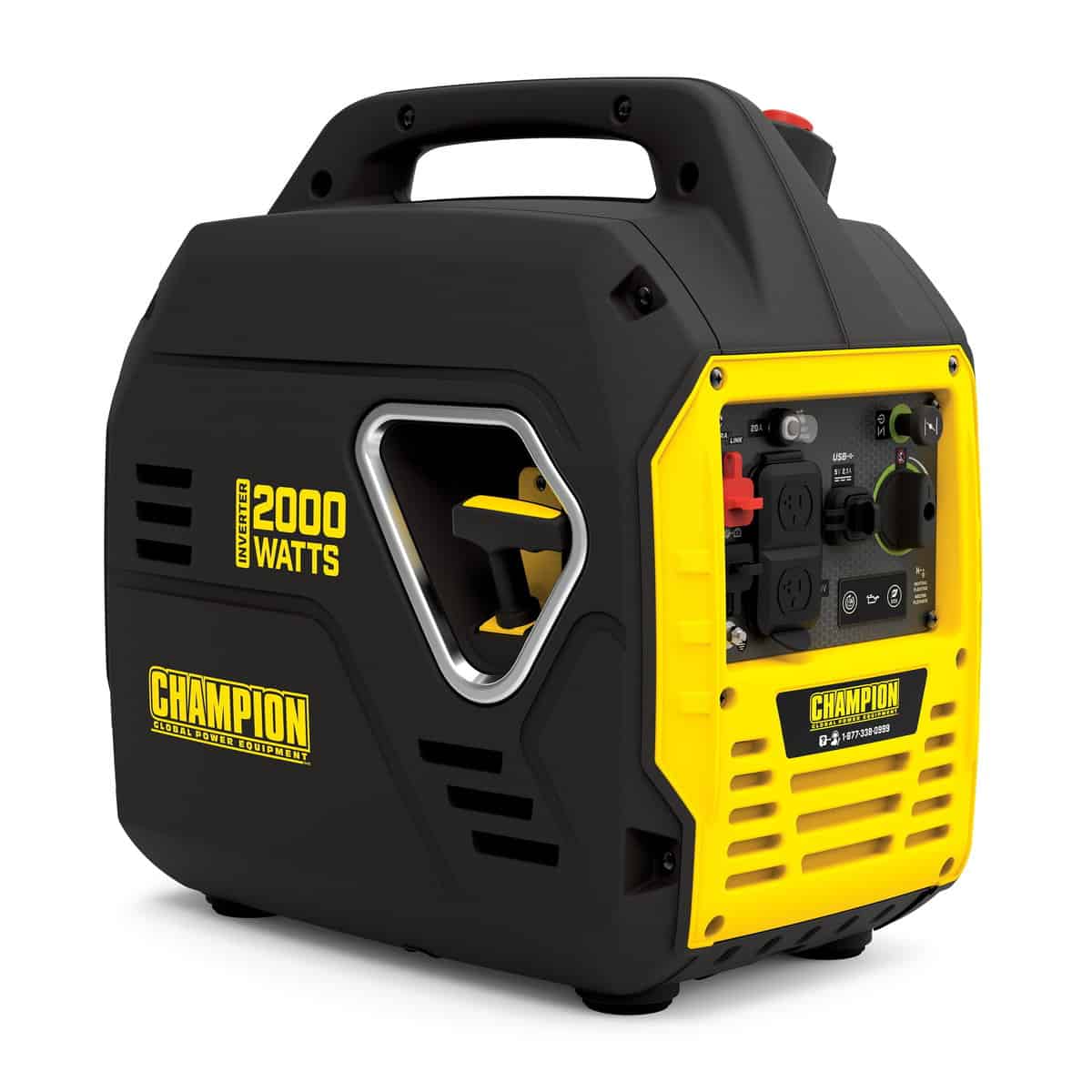
Image Credit: Walmart
Conclusion
In conclusion, using a generator correctly is essential for safeguarding your electronics. Taking the necessary precautions and following the steps outlined in this article will ensure that you’re able to use a generator safely and protect your electronics from harm.
With some practice and an understanding of how generators work, you can avoid common mistakes and find innovative solutions to make sure your devices are always safe when relying on a generator as a power source.








